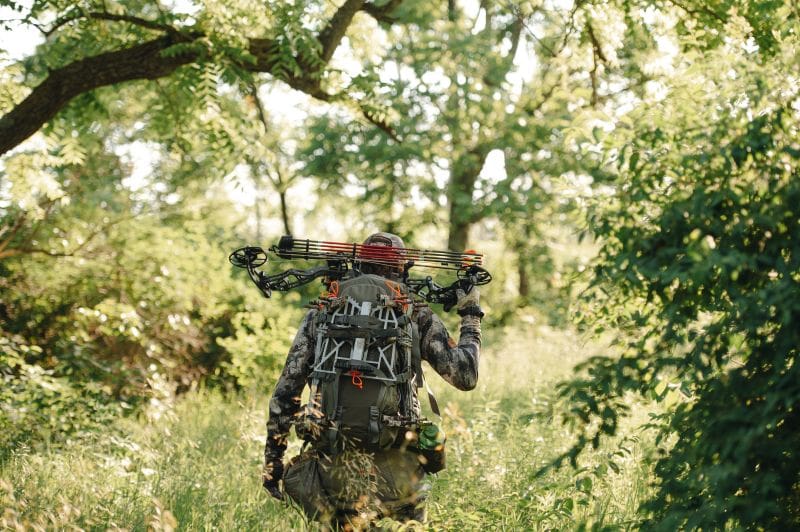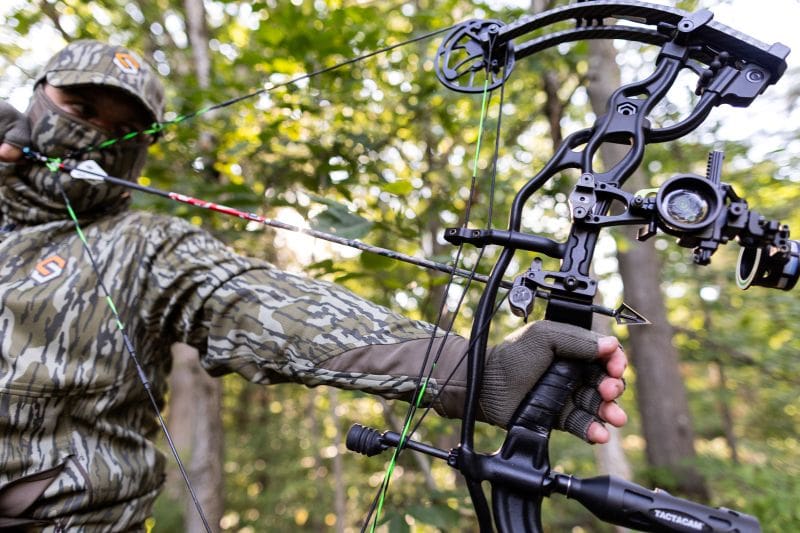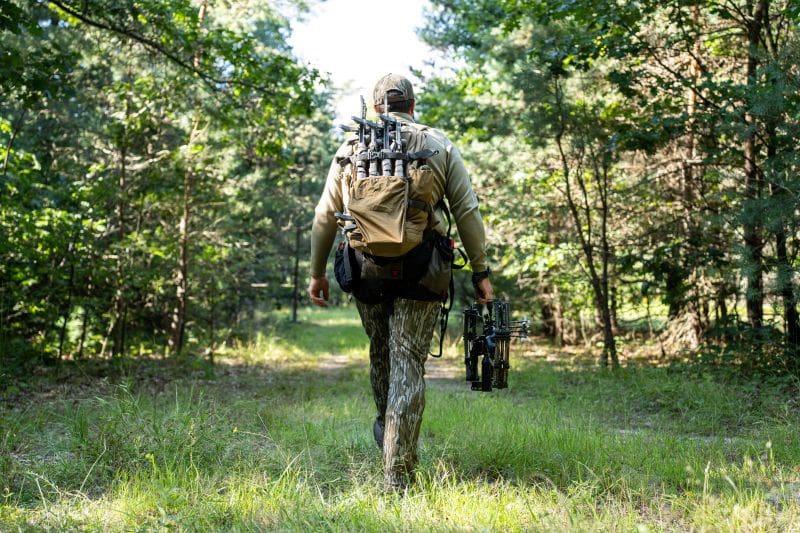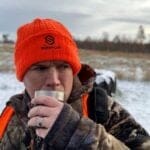When September and October arrive, hunters across the whitetail’s range face one of the most predictable times of the year. Early-season deer movement primarily follows a simple pattern from bedding to feeding, and then back again. Recognizing and taking advantage of these bed-to-feed routines can be the difference between watching bucks from afar and tagging one.
Why Bed-to-Feed Matters in the Early Season
Unlike the rut, when bucks may roam for miles in pursuit of does, early-season movement is much more controlled. Whitetails, especially mature bucks, tend to follow a consistent daily pattern. They bed down in secure cover during the day and travel short distances to reach preferred food sources in the evening. I have often compared early patterns to human behavior. When it is hot and humid outside, we seek shade, move less to stay cool, and rest. The same applies to a deer; they get hot more easily than humans, which explains why they minimize their movements during September and early October. At night, they return to their bedding cover before sunrise.
The predictable and patternable behaviors of early-season whitetails allow hunters to plan hunts around food sources, travel routes, and bedding spots without the unpredictability of rut-driven movement. The key is identifying where a buck is bedding, what he’s feeding on, and howhe moves between the two.

Identifying Bedding Areas
Early-season bedding areas often appear different from those in the late season. Deer do not need thick, thermal cover when it’s warm outside. Instead, they favor shaded, cool locations with a good vantage point and safety from predators, and to keep their body temperatures lower to stay cool.
For about a month leading up to our first hunt of the season, two buddies and I spent hours on our GPS hunting apps, marking spots that looked promising. Our trip was set for September 20th on a smaller piece of public ground in south-central Missouri. Earlier in the summer, one of my friends had already put in two weekends walking and scouting parts of the property. The rest of the time, we relied on our apps, HuntStand for me, and OnX Maps for the other two. By the time we pulled into the area on that Saturday morning, each of us had already picked out three to four spots. I decided on a thick bedding area with an overgrown, grassy trail that led out to a crop field, which deer use as a food source. My friends leaned more toward bedding cover, water, and shaded spots where deer would likely spend hot afternoons. If you’re trying to line up some early-season hunting locations, here are a few things to keep in mind.
- South-facing slopes and creek bottoms: These spots stay cool in warm weather.
- CRP fields and grassy patches: Bucks like tall grass that hides them but allows airflow.
- Edges of ag fields or staging cover: Early-season deer don’t always bed far from food.
Scouting with hunting apps and on-the-ground efforts, along with the use of trail cameras, glassing fields, and noting where deer consistently emerge at last light, can help identify likely bedding areas.
During our late September hunt, all the bucks we saw were in deep timber and thick bedding areas, only heading to the fields after dark. The deer that were taken from our hunting camp all came from thick bedding areas in the late afternoons.

Zeroing in on Feeding Areas
Food drives nearly all deer movement in September and early October. Bucks need calories to recover from summer growth and prepare for the rut. The most attractive food sources vary by region and season, but some staples include green soybeans, which are highly attractive until they start turning yellow; alfalfa and clover plots, which are consistent evening attractions; and corn fields, which bucks hit early on when stalks are still standing and later after they’ve been harvested. In more wooded areas, deer often focus on mast crops like white oak acorns, which can quickly change a buck’s pattern. If deer suddenly vanish from a field they were hitting nightly, it often means their preferred food source has shifted to freshly fallen acorns. Adapting quickly is necessary and is one of the best ways for hunters to avoid the so-called October lull.
Travel Routes and Staging Areas
The connection between bedding and feeding areas is often more vital than either of the endpoints. Mature bucks rarely walk straight into an open field before dark. Instead, they stay in staging areas, thickets, oak flats, or brushy field edges, before finally stepping out at last light.
Identifying these staging areas is essential. Setting up too close to a food source runs the risk of disturbing deer, while hunting near their bedding areas can allow you to get winded or spook them during entry. During the early season, the best places to hunt are often the middle ground, travel routes, and staging cover, since they usually offer the highest odds of success.

Playing the Wind and Thermals
Knowing how deer use wind and thermals is just as important as knowing where they bed and feed. Deer will often bed with the wind at their back so they can see what’s in front of them and smell what’s behind. When they’re on the move, they tend to follow routes that let them scent-check feeding areas. Hunting a spot on the wrong wind, even one you’ve scouted carefully, can ruin it the very first time. Select stand locations that allow you to slip in and out without tipping off the deer, even if that means hunting them less often. If you push deer too hard too early, you risk disrupting their patterns and losing the advantage the early season offers.
A better approach is to take it slow, pay attention, gather clues, and wait for the right moment. Decoding those bed-to-feed patterns is really about timing, observation, and moving in when everything aligns. Early-season whitetails are creatures of habit, and when hunters respect the wind, play the edges, and stay mobile, they can capitalize on one of the best windows of predictability all year. The hunter who learns to read bedding areas, food sources, and the subtle routes in between will be the hunter who gets a crack at a mature buck before October’s shifting patterns set in.

